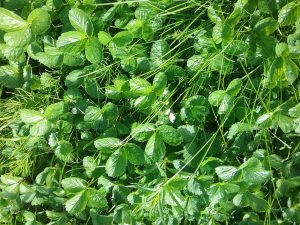
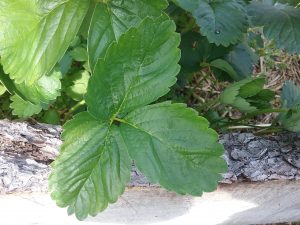
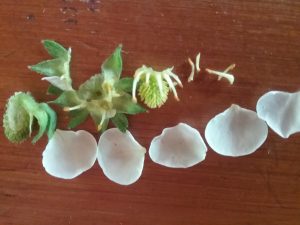
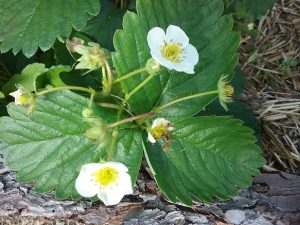
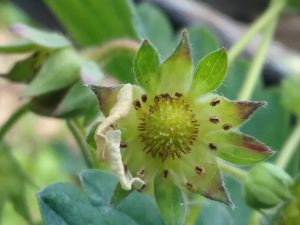
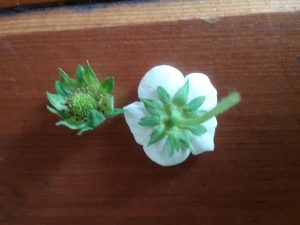 I have been delighted that Sitka strawberries have naturalized in my front yard as a pretty and fast expanding ground cover. To give the fruits more sun, I harvest leaves that I dry for a mild and slightly tannic addition to tea mixtures.
I have been delighted that Sitka strawberries have naturalized in my front yard as a pretty and fast expanding ground cover. To give the fruits more sun, I harvest leaves that I dry for a mild and slightly tannic addition to tea mixtures.
According to my readings, the various wild and domesticated varieties vary in the number of petals. The ones I photographed (not Sitka, which flower later) have five, broadly ovate petals – white with a tinge of yellow at the point of attachment. Sources assert five sepals as well, but I count ten. On the other hand, they are so tightly fused to the base that I tore them when looking, but it certainly looks like five thin and five wide to me. All attach at the bottom of the receptacle (the future fruit), along with a circle of stamens. I counted 18 on my best specimen. The receptacle is yellow green at this time of year, and firm, covered with numerous short, yellow pistils which will form achenes in the mature fruit.
The compound leaves (three leaflets) are dark green, serrated, slightly hairy and stiff, with deep, parallel venation.


Thanks Laura,
Nicely done dissections and photographs! Remember the Rosaceae have an epicalyx, it is a second whorl of bracts that looks similar to the sepals, but it is not part of the calyx, thus you are counting 10 sepals, and since you determined they were not identical it makes sense to call them something different – the epicalyx. The venation of the leaflets should be pinnate, have another look, there should be a main vein, and the secondary veins should come of it, thus pinnate venation on the leaflets.
If you could change the title of your post to Fragaria 🙂 that would be great, thanks!